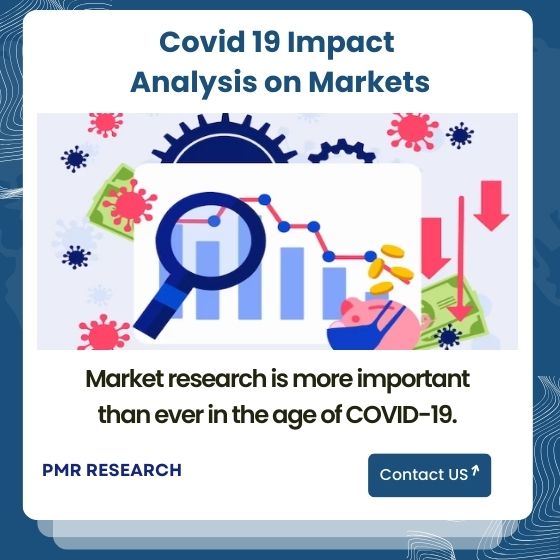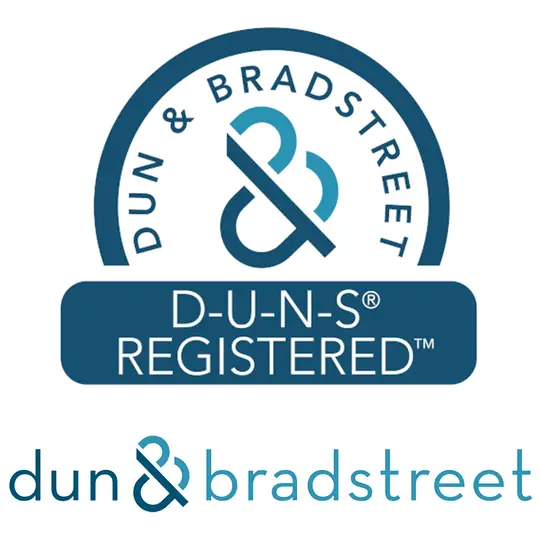
France Automotive Market By Types (Original Equipment Suppliers, Original Equipment Manufacturers and Independent Market) and Geography (NA, EU, APAC, and RoW) Analysis, Share, Trends, Size, & Forecast From 2024-2030


Market Executive Summary
France Automotive Market is expected to grow at a CAGR of 6.49% during the forecast period and is expected to reach US$ 50.91 Bn by 2029.
The French automotive manufacturing segment is now the 5th largest in the EU. It is dropping momentum, particularly since the crisis. 418 groups belong to the automotive segment & account for nine tenths of the production of the segment. In relation to other manufacturing segments, the commercial part is more established within these groups, particularly the multinationals.
The French balance of trade is in deficit with compare to automotive products owing to imports from foreign, mostly German, manufacturers. Though French multinational groups are still donating positively to the balance of trade, they have situated the majority of their manufacturing processes outside France to serve the domestic markets & to be re-exported to France.
The French Automotive Industry: Key Findings:
Fifth in Europe: France's automotive manufacturing ranks fifth in the European Union, although it has lost some momentum recently, particularly after the 2008 financial crisis.
418 Companies: The segment comprises 418 companies, contributing to roughly 90% of its total production. Commercial vehicle production is stronger within these groups, especially among multinational manufacturers.
Trade Deficit: Despite the industry's size, France faces a trade deficit in automotive products due to imports from foreign, primarily German, companies.
Multinational Reach: French multinational groups like Renault and PSA Group contribute positively to the trade balance, but much of their manufacturing takes place outside France, supplying both domestic markets and re-exporting back to France.
Global Ranking: The top ten global car manufacturers, including Renault and PSA Group, account for 70% of worldwide production. French companies alone produce nearly 8 million vehicles, placing them ninth and tenth in the world ranking.
Growth Strategies: Both French groups experienced volume growth in 2019, attributed to the strong European market and strategic acquisitions like Jinbei/Huasong (Renault) and Opel (PSA).
Production Shift: French automotive production now represents 8.3% of the global share, significantly higher than 2013-2014 levels (around 6%). This reflects a broader trend of carmakers becoming increasingly international since 2000. European, American, Japanese, and Korean companies that once produced 60-70% within their home region now operate with a 30-50% range. Notably, Japanese and Korean companies lead in international production, with only 44% of Korean vehicles manufactured domestically. This phenomenon extends even to emerging market companies like Geely and Tata.
Key Market Insights:
Innovation Focus: The France Automotive Market prioritizes technological advancements, including electric vehicles (EVs), autonomous driving, and connectivity solutions.
Consumer Preferences: French consumers increasingly value eco-friendly vehicles, leading to the growth of EVs and hybrid cars.
Environmental Regulations: Stringent environmental regulations influence vehicle emissions and promote sustainable mobility solutions.
Market Competitiveness: International automakers and domestic manufacturers compete for market share, driving innovation and product diversification.
Market Driver's:
Several factors drive the growth of the France Automotive Market:
Electric Vehicle Adoption: The rising popularity of electric vehicles (EVs) is driven by government incentives and consumer demand for eco-friendly transportation.
Technological Advancements: Continuous innovations in automotive technology, including autonomous driving and connectivity features, enhance the driving experience.
Sustainability Initiatives: Environmental concerns prompt automakers to develop eco-friendly vehicles and reduce carbon emissions.
Consumer Preferences: Changing consumer preferences toward smaller, fuel-efficient, and electric cars influence market dynamics.
Regional analysis of the France Automotive Market provides insights into the unique dynamics shaping the automotive industry across different regions within the country:
Paris Region: The Paris region is a hub for automotive innovation, housing research and development centers and startups focused on electric mobility and autonomous driving.
Auvergne-Rhône-Alpes: This region hosts automotive manufacturing facilities and is known for its production of commercial vehicles and components.
Hauts-de-France: The northern region is home to major automotive production sites, contributing significantly to the French automotive sector.
Grand Est: Known for its automotive supply chain and production of automotive components, this region plays a vital role in the industry.
Sustainable Mobility in Île-de-France: The Île-de-France region, including Paris, promotes sustainable mobility solutions such as electric buses and shared transportation services.
France Automotive Market, by Type
Passenger Vehicles
Commercial Vehicles
Three Wheelers
Two Wheelers
France Automotive Market Key Players
Honda
Volkswagen
Toyota
Nissan
Honda
Mazda
Mitsubishi
Mercedes-Benz
BMW
Porsche
Skoda
Land Rover
Audi Motors
Groupe Renault
Citroen
Peugeot
Bugati
Groupe PSA
Automobiles Alpine
Conclution:
In conclusion, the France Automotive Market represents a dynamic and competitive industry characterized by innovation, sustainability, and consumer-centric approaches. The market adapts to changing consumer preferences, environmental concerns, and technological advancements. Electric mobility, autonomous driving, and connectivity solutions are key drivers of market growth. Challenges include economic fluctuations, supply chain vulnerabilities, and regulatory compliance. However, opportunities abound in electric vehicle adoption, technological innovations, sustainable mobility solutions, and customer-focused strategies. As France and the automotive industry navigate evolving trends and challenges, the market is poised for continued growth and transformation. Companies that prioritize innovation, sustainability, and alignment with consumer preferences are well-positioned to excel in the dynamic France Automotive Market.
Table of Contents
Table of Contents
Introduction to France Automotive Market
1.1. Study Scope
1.2. Assumption and Methodology
Executive Summary
2.1. Market Snippet
2.1.1. Market Snippet by Type
2.1.2. Market Snippet by Application
2.2. Competitive Insights
Key Market Trends in France Automotive
3.1. Market Drivers
3.1.1. Impact Analysis of Market Drivers
3.2. Market Restraints
3.2.1. Impact Analysis of Market Restraints
3.3. Market Opportunities
3.4. Future Trends
France Automotive Industry Study
4.1. Porter’s Five Forces Analysis
4.2. Marketing Strategy Analysis
4.3. Growth Prospect Mapping
4.4. Regulatory Framework Analysis
France Automotive Market Landscape
5.1. Market Share Analysis
5.2. Key Innovators
5.3. Breakdown Data, by Key Manufacturer
5.3.1. Established Player Analysis
5.3.2. Emerging Player Analysis
Market Segmentation by Type
6.1. Overview
6.1.1. Segment Share Analysis, By Type, 2017 & 2028 (%)
6.2. Original Equipment Suppliers (OES)
6.2.1. Overview
6.2.2. Market Analysis, Forecast, and Y-O-Y Growth Rate, 2017–2028 (US$ Million)
6.3. Original Equipment Manufacturers (OEM)
6.3.1. Overview
6.3.2. Market Analysis, Forecast, and Y-O-Y Growth Rate, 2017–2028 (US$ Million)
6.4. Independent Market (IAM)
6.4.1. Overview
6.4.2. Market Analysis, Forecast, and Y-O-Y Growth Rate, 2017–2028 (US$ Million)
Key Vendor Analysis
7.1. Toyota
7.1.1. Company Snapshot
7.1.2. Financial Performance
7.1.3. Type Benchmarking
7.1.4. Strategic Initiatives
7.2. Volkswagen
7.2.1. Company Snapshot
7.2.2. Financial Performance
7.2.3. Type Benchmarking
7.2.4. Strategic Initiatives
7.3. Hyundai Motors
7.3.1. Company Snapshot
7.3.2. Financial Performance
7.3.3. Type Benchmarking
7.3.4. Strategic Initiatives
7.4. Ford
7.4.1. Company Snapshot
7.4.2. Financial Performance
7.4.3. Type Benchmarking
7.4.4. Strategic Initiatives
7.5. Nissan
7.5.1. Company Snapshot
7.5.2. Financial Performance
7.5.3. Type Benchmarking
7.5.4. Strategic Initiatives
7.6. Honda
7.6.1. Company Snapshot
7.6.2. Financial Performance
7.6.3. Type Benchmarking
7.6.4. Strategic Initiatives
7.7. Suzuki
7.7.1. Company Snapshot
7.7.2. Financial Performance
7.7.3. Type Benchmarking
7.7.4. Strategic Initiatives
7.8. Chrysler
7.8.1. Company Snapshot
7.8.2. Financial Performance
7.8.3. Type Benchmarking
7.8.4. Strategic Initiatives
7.9. BMW
7.9.1. Company Snapshot
7.9.2. Financial Performance
7.9.3. Type Benchmarking
7.9.4. Strategic Initiatives
7.10. Mitsubishi
7.10.1. Company Snapshot
7.10.2. Financial Performance
7.10.3. Type Benchmarking
7.10.4. Strategic Initiatives
360 Degree Analyst View
Appendix
9.1. Research Methodology
9.2. References
9.3. Abbreviations
9.4. Disclaimer
9.5. Contact Us
List of Figures
List of Figures
1.France Automotive Market Segmentation
2.Market Research Methodology
3.Value Chain Analysis
4.Porter's Five Forces Analysis
5.Market Attractiveness Analysis
6.Competitive Landscape
6.1. Key Company Market Share Analysis, 2018
7.Type Segment Market Share Analysis
7.1. Market Share Analysis, 2017 & 2028
8.Type Segment Market Size Forecast and Trend Analysis
8.1. Forecast and Trend Analysis, 2014 to 2028 (USD Million)
9.OES Market Size Forecast and Trend Analysis
9.1. Forecast and Trend Analysis, 2014 to 2028 (USD Million)
10.OEM Market Size Forecast and Trend Analysis
10.1. Forecast and Trend Analysis, 2014 to 2028 (USD Million)
11.IAM Market Size Forecast and Trend Analysis
11.1. Forecast and Trend Analysis, 2014 to 2028 (USD Million)

This report focuses on:
► Intelligent insights to take informed business decisions.
► Qualitative and quantitative analysis of the market.
► Market size and forecasts from 2024 to 2030.
► Opportunities for expansion and in-depth market analysis.
► Segmentation and regional revenue forecasts.
► Analysis of the market share and competitive landscape.
► Strategic recommendations for future growth.
You'll also receive:
► A comprehensive market research report in PDF or PPT formats.
► Access to our analysts to learn more about the report and get answers to your specific business questions.
► The option to customize the report to meet your specific needs, such as adding more countries or regions or developing abusiness case to launch a new product.


